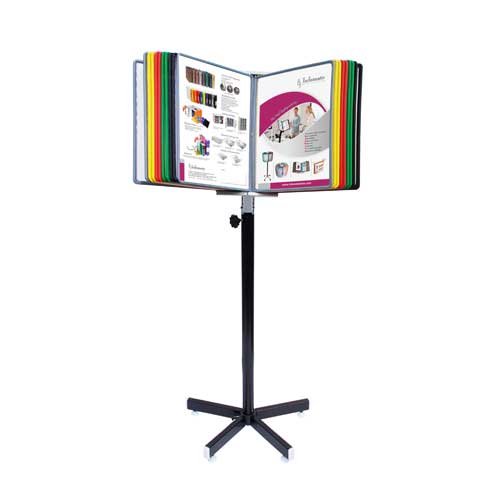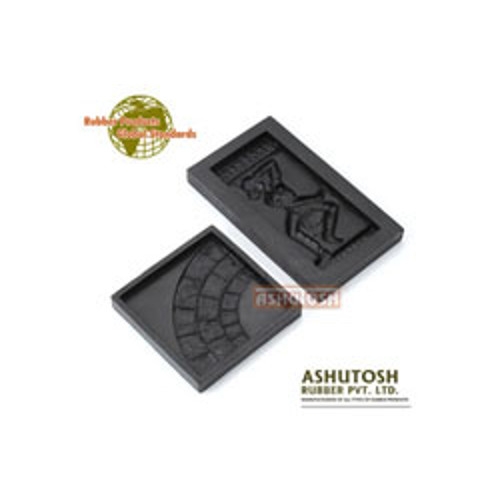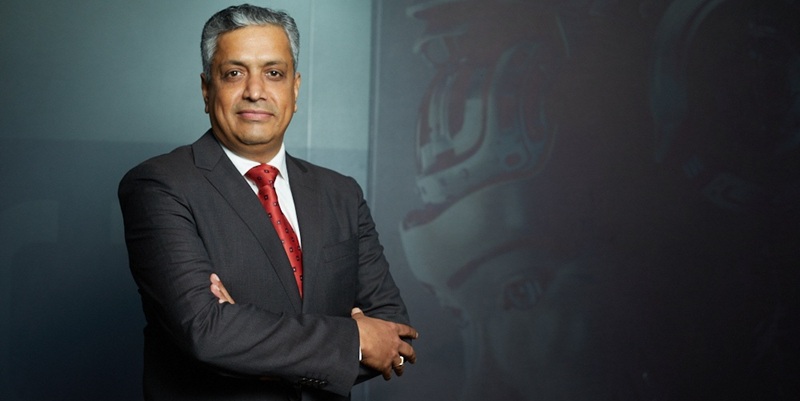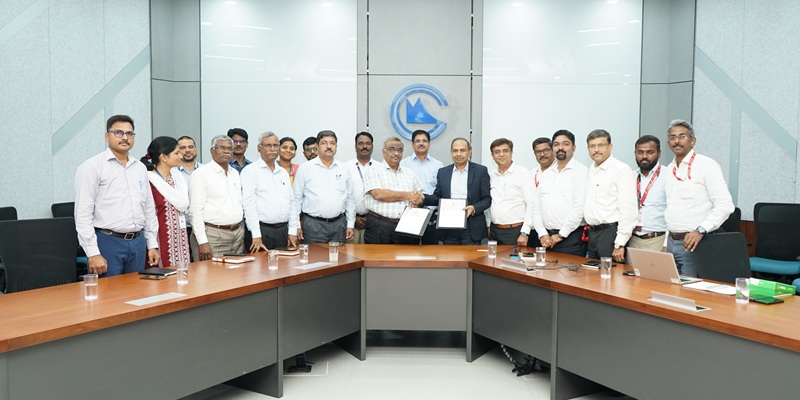Schedule a Call Back
Enterprises should not rush to adopt disruptive technologies
 Interviews
Interviews- Mar 01,19
Automation is helping organisations rise to the challenge of doing more with shrinking resources and budgets.

Automation is helping organisations rise to the challenge of doing more with shrinking resources and budgets. In an exclusive interaction with Manish Pant, Abhimanyu Prabhavalkar, Vice President, IoT and Blockchain Apps Cloud at Oracle India asserts that even as disruptive emerging technologies are becoming increasingly affordable, firms need to adopt them only after identifying their key operational requirements. They also need a roadmap to determine how they intend to maximise the benefits of technologies such as AI and IoT in the long-term.
According to government data, the country’s MSME sector accounts for 33% of the country’s gross value output (GVO), contributes around 29% to the GDP and creates nearly 111 million jobs. How can the sector best benefit from the rise of such disruptive technologies such as artificial intelligence (AI) and the internet of things (IoT)?
Digital is disrupting every industry. Automation is helping organisations rise to the challenge of doing more with shrinking resources and budgets, while the IoT, AI and mobile technologies are changing the way we work and connect with businesses. However, taking advantage of these transformative technologies can be challenging for midsize businesses in hypergrowth. They may struggle to scale or be wrestling with legacy systems, manual processes and a lack of the right IT skills. Although the cloud has made these emergent technologies more accessible, secure and affordable, smaller businesses can be slow to adopt them for fear of disrupting their day-to-day operations. Some of the fastest-growing organisations have embarked on their journey to innovation and are leveraging a new era of autonomous computing powered by AI and machine learning with Oracle Cloud. The cloud has enabled them to migrate and modernise applications, lower costs and improve security and speed to market.
All this presupposes a level of technological maturity. What should be the base before firms undertake integration of these technologies? Should they look at manufacturing or services?
As this is a very important aspect, we should look at these technologies a bit more carefully. Enterprises should not blindly rush the adoption of these technologies based on the hype surrounding them. They should first identify the most important or problem areas from an operational standpoint. For example, all firms have a supply chain with parts that incur huge costs. A firm needs to identify those. There could be low hanging fruits like transportation, where real-time visibility of the shipment might be the first area one could focus on because it is important in terms of customer experience. Or it could be the adherence to schedules by suppliers of raw materials, where delays could disrupt production. One has to look at where a significant amount of costs and potential opportunities are involved.
In February, India announced a national programme for AI in the interim budget in a bid to expand its utilisation. What is your own perspective on the proposal especially from the MSME point of view?
The global AI market was valued at $16.06 billion in 2017 and is expected to grow to $190.61 billion by 2025, at a CAGR of 36.62%. According to NASSCOM, AI is expected to add $957 billion to India’s economy by 2035. Another report from LinkedIn ranks India third in terms of penetration of AI skills among its workforce, with the US and China as the top two countries in the list. We believe that the announcement of National Artificial Intelligence Portal will provide an impetus to the use of advanced and disruptive technologies for the country’s economic prosperity and growth.
Do you foresee disruptive technologies like AI, blockchain and IoT, etc., merging to create value? Or should firms evaluate these technologies on a standalone basis to integrate them at a later stage?
Today, firms should have a roadmap in terms of how they will use these technologies in a mature manner over a period of time. They should not expect utilisation of all these technologies in the best possible manner from day one. This is not a practical expectation. It is our objective to help customers adopt technology as optimally as possible. We have observed that the effort required by customers to integrate various pieces together – for them to start seeing a solution that business stakeholders can use – is high. One way to resolve this is to offer pre-packaged or pre-integrated applications to the customer. Let us take a simple example of IoT and AI for a manufacturing firm. There are manufacturing applications where they do the planning. Then there is a maintenance application, where the maintenance workflows of the assets or machines are managed. If you introduce an IoT application, which is a separately hanging tool, however good it may appear, it won’t be of any real business benefit for the enterprise. But if the manufacturing work order from the application is automatically synced with IoT production or factory monitoring application, with the IoT application giving real-time visibility in terms of business metrics and key performance indicators (KPI) and also prediction and forecast based on advanced analytics embedded in it, there is an immediate efficiency gain. When customers get such integrated solutions, they find them easier to adopt.
What are the opportunities and risks that such technologies pose for the Indian industry?
There are a number of opportunities. Many firms in India have a large amount of data collected from their programmable logic controllers (PLC) and supervisory control and data acquisition (SCADA) systems over a period of 20 years. The problem is they are not using that data in a contextual manner. The idea is not to analyse data for the sake of it but to derive some useful insights from it. Just by using these new technologies to analyse the existing data, firms can identify ways to optimise their existing business processes. Using these technologies, they can enhance their customer experience. Being able to provide a product as a service is another huge opportunity in the waiting. Blockchain applications will address the challenges faced in multi-tier visibility, non-disputable root-cause analysis, compliance and provide opportunities for avoiding counterfeiting, providing farm-to-fork visibility to end consumers, etc. As for the cautionary flags, firms should resist the temptation to go overboard with technology. For example, analytics is a journey. If we look at analytics and IoT together, firms need the ability to connect machines and applications and start injecting data. This is the connect phase. Once the data is collected in a confident manner, it will solve some of the problems in terms of real-time visibility and business metrics. Once the data is available, firms can start building the analytical layer on that like predictive and anomaly detection algorithms. Using these, firms can wire their forecasts into their business applications. Firms should be cautious about ignoring the quality of data they are sourcing or building algorithms too early or in a haphazard manner. Most importantly, we should not rule out human intervention as that is a fallacy. The solutions have to be able to accommodate the feedback from the domain or technical experts in perfecting the analytics as they progress.
What strategic recommendations would you provide to Indian firms?
The most important one is to evaluate these technologies in the context of the business outcomes they want to achieve. Secondly, it is important to identify areas of operations which can benefit the most and defining those use cases very clearly, before adopting new technology. Thirdly, try and avoid the cost of integrating different disparate pieces of technologies to form a solution. This becomes an on-going burden that they will have to manage for perpetuity. Most important, the outcomes need to be seamless. They cannot be fractured insights from multiple applications. Therefore, look for pre-integrated applications. Finally, look for someone who can do the complete solution. For example, in IoT, the value is not in the device, but in the analytics using that data. And that comes from the enterprise application. Look for someone who can build the entire solution, rather than getting mired in the technical nitty-gritty of the device. Additionally, firms have to look at technology from the ROI lens. Ask the right questions at the beginning, and then develop clarity on the ROI.
What are some of the challenges that you foresee once MSME players start large-scale implementation of new technologies?
MSMEs are in the same position as an enterprise that is embarking on a digital transformation. Like their larger counterparts, they need to define their direction, decide on business models, and create compelling customer experiences. They perhaps can direct resources and stop existing inertia more quickly than large enterprises. From a technology perspective, MSMEs through cloud now have substantially more capability and access to the same technology as their larger counterparts. New technologies and automation are also enabling resources to be employed in more innovative and productive areas, and the cloud has made these emergent technologies more accessible, secure and affordable. As a result, cloud services are being embraced by businesses around the globe, including small-to-medium businesses (SMB).
Adopt Disruptive Technologies
Abhimanyu Prabhavalkar
Programmable Logic Controllers
Analytical Layer
Related Stories
Automation & Robotics

Enterprises should not rush to adopt disruptive technologies
Automation is helping organisations rise to the challenge of doing more with shrinking resources and budgets.
Read moreRelated Products

Heat Exchanger Scale Removal Compound -hesr-300
INDUSTRIAL AUTOMATION & TECHNOLOGY CONSULTANCY
Read more
Request a Quote

Dna of All Information
INDUSTRIAL AUTOMATION & TECHNOLOGY CONSULTANCY
Roto Leaner Technology Pvt Ltd manufactures a complete range of display solutions.

Standard Series Stations and Enclosures
INDUSTRIAL AUTOMATION & TECHNOLOGY CONSULTANCY
Esbee
Industrial Combines/Esbee Electrotech LLP offers standard series stations and
enclosures.
Hi There!
Now get regular updates from IPF Magazine on WhatsApp!
Click on link below, message us with a simple hi, and SAVE our number
You will have subscribed to our Industrial News on Whatsapp! Enjoy














